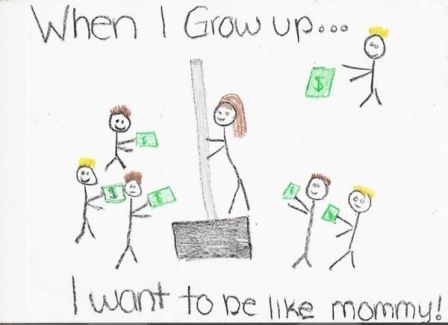Shakespeare Teacher: The Book!
Wednesday, September 1st, 2010I am proud to announce that I have recently published a chapter in this book on teaching literature through technology. You can ignore the description; it seems to have been inadvertently switched with that of this book
. Neither page describes my chapter, but you can read the abstract on the publisher’s page, or I could just tell you what it’s about.
Unlike this blog, the book chapter is actually about teaching Shakespeare! No riddles. No anagrams. No politics. (Well, maybe a little bit of politics.)
Here is the basic idea. I begin by citing experts who are skeptical of the ability of elementary school students to do Shakespeare. Specifically, I discuss the Dramatic Age Stages chart created by Richard Courtney.
Courtney describes “The Role Stage” as lasting from ages twelve to eighteen, at which point students are capable of a number of new skills that I would consider essential for understanding Shakespeare in a meaningful way. These skills include the ability to think abstractly, to understand causality, to interpret symbols, to articulate moral decisions, and to understand how a character relates to the rest of the play. So based on this chart, I would have to conclude that a student younger than twelve would not be ready to appreciate Shakespeare in these ways.
But Courtney bases his chart on the framework of developmental phases of Swiss psychologist Jean Piaget. These phases describe what a lone child can demonstrate under testing conditions. A more accurate and nuanced way of looking at development is provided in the work of Soviet psychologist Lev Vygotsky
, who described a “Zone of Proximal Development” (ZPD), which is a range between what a child can demonstrate in isolation, and what the same child can do under more social conditions.
So I wondered if fifth-grade students (aged 10) would have some of the skills associated with “The Role Stage” somewhere in their ZPD. If so, a collaborative class project should provide enough scaffolding to develop those skills and allow ten-year-old students to understand and appreciate Shakespeare on that level.
So I developed and implemented a unit to teach Macbeth to a fifth-grade class in the South Bronx, using process-based dramatic activities, a stage production of the play performed for their school, and a web-based study guide to apply what they had learned. The idea was to use collaborative projects to get the kids to work together to make collective sense of the play. I then examined their written work for evidence that they had displayed the skills associated with “The Role Stage” in Courtney’s chart, and I was able to find a great deal of it.
I also create a three-dimensional rubric to assess the students’ work over the course of the unit. I say a three-dimensional rubric because I use the same eight categories in all three rubrics, but they develop over time to reflect the increased sophistication that I expect the students to demonstrate. I then compare the students’ performance-based rubric scores to their reading test scores to demonstrate that standardized testing paints only a very limited picture of what a student can achieve. (I did say that it had a little bit of politics.)
Anyway, that’s what my chapter was about. I just saved you $180! And I’m hoping to return to a regular blogging schedule soon, so more content is hopefully on the way.
